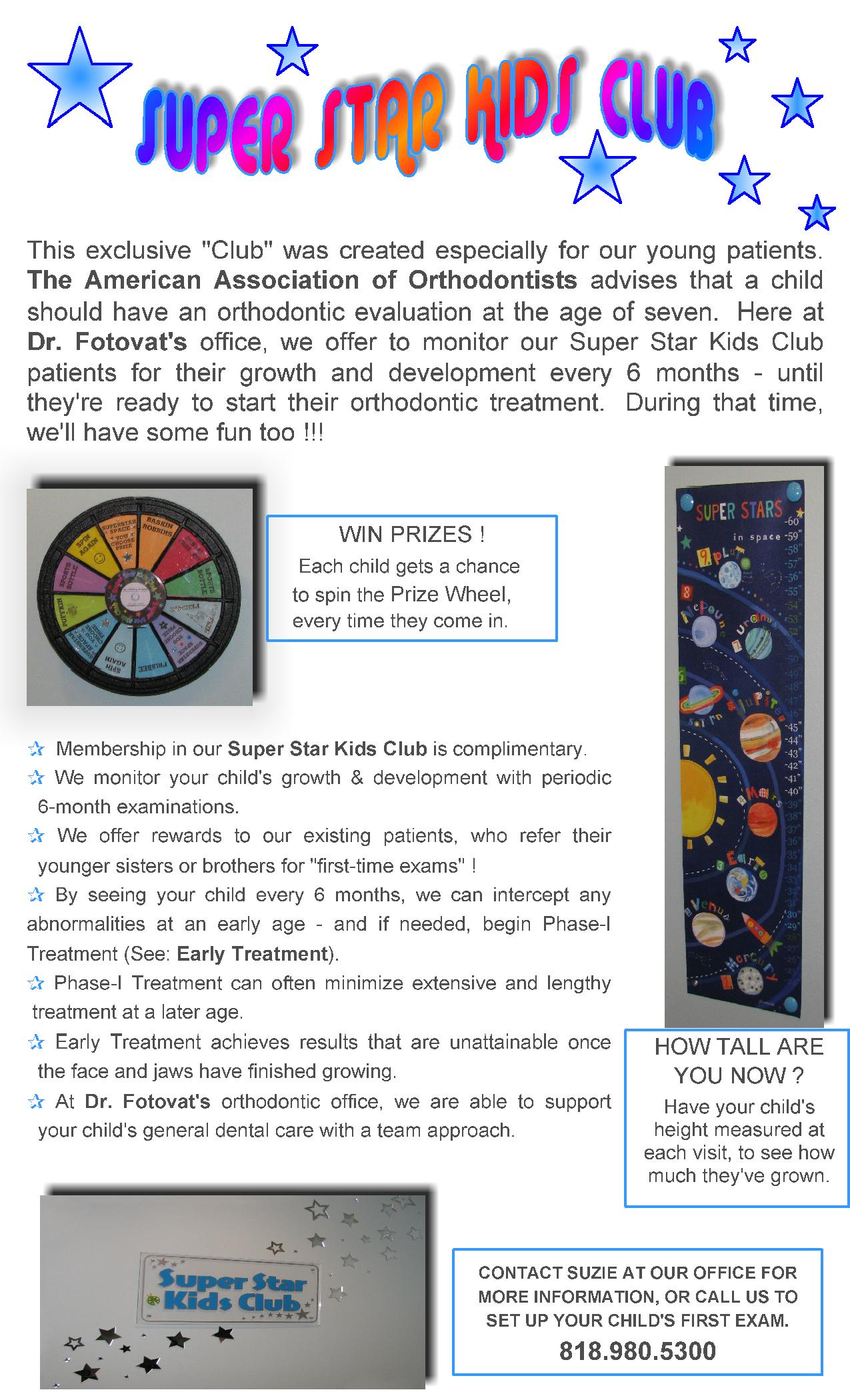Determining the best time to for orthodontic treatment depends on each individual patient and case. The American Association of Orthodontists does, however, suggest that you have your child evaluated by age seven. At this age, key developmental changes should have occurred in your child’s dental and facial structures, which would help determine whether treatment is needed
These changes include, but are not limited to:
- Eruption of upper and lower permanent first molars, which influence the bite position and width of the jaws
- Eruption of the upper and lower permanent incisor teeth (front teeth), which affect the arch length and width. Your front teeth can also impact crowding, deep bites, open bites, and some facial asymmetries.
Many times correcting issue early on will lessen the likelihood of more difficult orthodontic treatment later. Remember that most children will not need early treatment. Bringing your child to see Dr. Fotovat early on allows you the opportunity to have the growth and development monitored by a professional, giving you the peace of mind that you desire.
Early (Phase I) orthodontic treatments can address issues such as:
- Encouraging proper jaw growth
- Coordinating the upper and lower jaw width and position
- Minimizing the risk of trauma to protruding upper front incisor teeth
- Correcting the results of oral habits like thumb sucking, tongue thrusting, etc.
- Boosting self esteem
- Improving speech difficulties
- Resolving facial asymmetries
- Reducing the risk of impacted teeth
- Preserving or gaining space for unerupted teeth if primary teeth are lost prematurely
- Lessening treatment time for second phase orthodontic treatment
If your child needs early treatment (Phase I), the time frame usually spans from 6 to 18 months. Once Phase I treatment end, Dr. Fotovat will remove any appliances and monitor the growth and development of the patient during a rest period. The corrective portion of the orthodontic treatment (Phase II) can begin after the rest of the permanent teeth have erupted. During Phase II, treatment will address the alignment of all permanent teeth.

